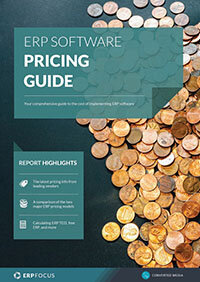Re-implementing your ERP - is it worth it?
I have been in this position and some of you as well. It is not desirable. Your ERP does not work the way you and your business wanted, and surely, there is blame to be found.
Review your requirements
Go back to the original requirements you developed before selecting your new, not-so-good ERP. Work up a carefully objective gap analysis that includes the cost of each gap. If the gaps cost less than a new ERP, you likely are better off salvaging the one you have. Where are the pain points today? Rather than a choice to throw out the entire ERP, examine if your situation is focused on certain user groups or kinds of transactions.
Data clean up
In my experience, many perceived ERP problems are data related. Somehow, you have bad data and attempts to make good decisions based on that data are doomed to failure. Your ERP has both static and dynamic data. The static kinds are supplier IDs, terms codes, and other values that rarely or never change. Dynamic data are transactional. Each customer shipment is an element of dynamic data.
Analyze the problems you think suggest a new ERP. Maybe your material planning system suggests new purchase orders far ahead of when your buyers would place those orders. Supplier lead-time is a static value and too many days of lead-time would cause the system to suggest incorrect purchase orders.
You ship your customer orders using your own fleet or by UPS but ERP tries to ship the orders via the post office. Did you leave the post office as the default shipping method? Clean up your static data and then ask if enough problems are solved and your team is now happy to use the new ERP.
Find the right ERP for your organization with our 60-step ERP selection checklist
Training
All your users received sufficient and appropriate training before your new ERP go-live. Is it time to test whether that training held up? Should you implement some remedial training programs now? If your users are entering transactions and making decisions in ways that do not support your enterprise goals, this could be the problem.
Change management
Switching to your new ERP was traumatic for many of your users. Did you help them handle that change well? There still is time to help some users adapt and embrace the new ERP if that will help. Remember that changing your ERP system again will be another traumatic event on top of the previous event. Even if that is your choice eventually, you must consider the risks of another change.
Your choice
Every ERP is designed to do the same things and the core concepts are identical across the spectrum of all ERP systems available. Thus, you are likely to find some specific problems in the old one that can be corrected. If you choose to go toward another implementation, you have fresh experience and ought to be able to excel this time.
Free white paper

ERP Software Pricing Guide
Get the latest pricing information on over 80 popular ERP systems, and learn how to budget for your ERP project in our free guide

Featured white papers
-

ERP Implementation: 9 steps to success
The 9 proven steps you should follow when implementing ERP
Download -

ERP Implementation Checklist
Over 120 actionable steps to implementing a new ERP successfully
Download -

Manufacturing ERP Implementation Checklist
Over 70 actionable steps to rolling out new manufacturing ERP software
Download
Related articles
-

The case for multi-tier ERP implementations
Learn more about multi-tier ERP implementation and why you might need one
-

CMMC Compliance: What Aerospace and Defense Manufacturers Need to Know
Key insights on CMMC compliance, deadlines, and securing DoD contracts with CMMC 2.0 certificatio...
-

An example ERP implementation team structure for your project
Learn about three key elements of an ERP implementation team and the individuals who contribute w...

